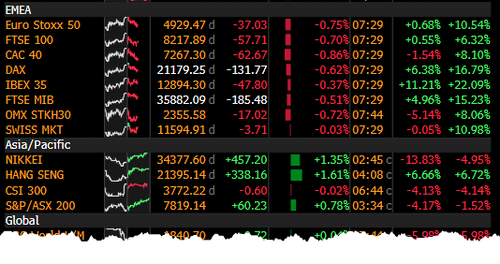Scheduling in restorative activities like self-care and exercise can help ensure they actually happen. Getty Images Ask Women and Work Question: It’s been a very busy time in my workplace for the past six months, non-stop really. I normally love the pace and high-pressure environment, but lately it’s been too much, and I’m dealing with fatigue, difficulty with focus and lack of motivation.
I’m feeling burned out. How can I get motivated again? We asked Cherry Rose Tan, entrepreneur-in-residence at Schulich School of Business and author, Still Standing: What It Takes to Thrive and Innovate in a Messy World , to tackle this one: When you are high performing, you need to make sure to take your recovery just as seriously as the way that you do business. I work with a lot of tech founders and when they are about to a launch a new product or enter a new market, they need to give 100 per cent effort.

But I tell them, after you finish your sprint, you need to go all-in on your recovery and self-care. Take even one or two days to fully recover so that, you have the energy and mindset for your next sprint. There are two main components to recovery mode: the physical health component and the mental health component.
For the physical side: Are you getting enough sleep? Are you eating well? On the mental health side, it’s taking time where you are not checking e-mails and not doing work. I joke with my founders: If your idea of recovery is picking up a [venture capital] book, you are still in work mode. You need that full day to do something completely non-work, maybe even allowing yourself to have a day of nothing.
It’s important to schedule your recovery and self-care. I feel like we live in a world where if it’s not on your calendar, it won’t happen. I’m a serial entrepreneur working with more than 300 startups and they’re all scaling right now, so my week is very, very busy.
But I live by my Google calendar. I have a colour for events that are only for self-care – pink. I have a colour that is only for social activities with family and friends – yellow.
So, before I start my week, early in the evening on Sundays, I have a quick glance at my calendar. Does it feel like it’s balanced? Or maybe it’s full tilt into work right now and I need to schedule in self-care. My non-negotiable, which is in pink, is going to the gym at least four times a week.
If I didn’t book that in my calendar, I don’t know if it would be happen. Honestly, it’s been a game changer for me. I think as women, especially women who are very ambitious, we feel the pressure of having to be superwomen both at work and in our personal lives.
For women reading this who feel burned out and exhausted right now, I hope you give yourselves permission to create time for yourselves where it’s not about taking care of everyone else. Create time that is just for you. Women Lead Here: Corporate Canada female leadership ranked This marks the sixth year for Report on Business magazine’s annual benchmark of gender diversity in corporate Canada.
This year’s benchmark includes 93 companies, a slight decrease from last year’s total of 97, but still a strong showing from 2020′s initial list which included 73 companies. Of those 93 companies, 16 are headed up by a woman in the corner office, compared with 21 last year. The number of women in executive roles at these companies is at least stable with an average of 46 per cent, up from 2023′s 45 per cent.
The reckoning: How companies can advance gender equality as a strategic priority in the era of DEI doubters It is, to say the least, a heated moment to be evaluating the state of executive gender diversity in Canada. Suddenly facing a real threat of populist and political pressure to ditch DEI, Canadian corporations have to mount defences for their good intentions, which wouldn’t be a problem if we had better proof that companies are, in fact, advancing gender equity. In the nearly eight years since the #MeToo movement forced long-simmering gender inequities to the forefront, some Canadian companies have indeed made gains.
But on the whole, the future has not been female. We haven’t solved sexism. In fact, there’s evidence that things are getting worse.
Looking for a workday pick-me-up? Spend time in nature – doctor’s orders There is strong evidence for the positive effects of nature on our health. The benefits are so well-proven that health-care professionals across Canada can now prescribe time in nature to their patients under a program called PaRx. Dr.
Melissa Lem is the director of PaRx and a family physician in Vancouver. “We want to make outdoor time non-negotiable,” Dr. Lem explains.
“It should be like brushing your teeth in the morning. You want to make it part of your everyday routine.” Since the program launched in 2020, 17,000 prescribers have registered for PaRx, doling out more than a million nature prescriptions in total.
.
Business

How better scheduling can help prevent burnout

Also, Report on Business magazine’s annual ranking of gender diversity in corporate Canada and the impact of the DEI backlash on women’s advancement















